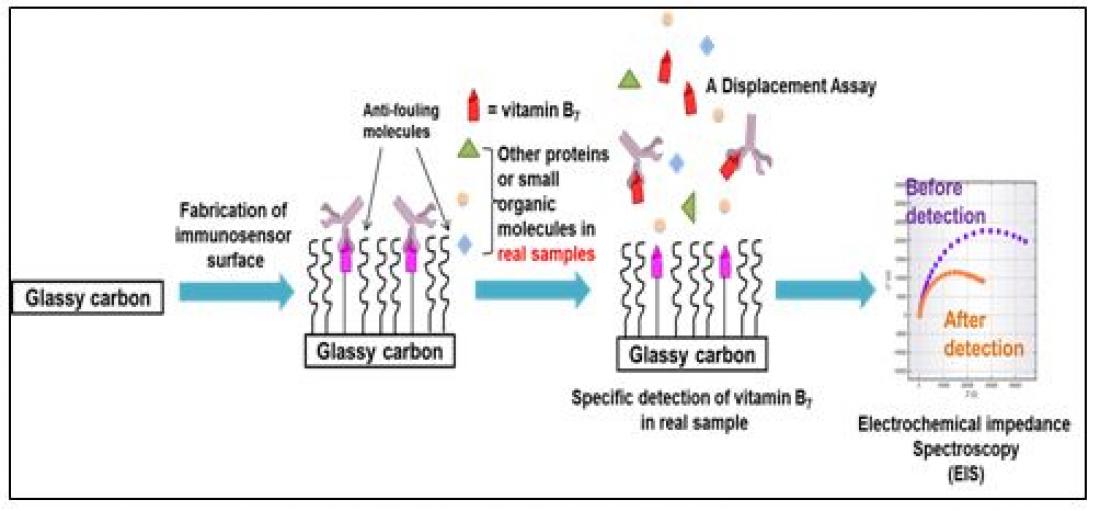Development of an electrochemical immunosensor for direct detection of vitamin B7 in real samples.
Vitamin B7, also known as biotin, is one of the essential nutrients in human body. It is important for cell growth, body metabolism, healthy skin, hair and nail strengthening as well as for blood sugar balancing. Besides that, adequate vitamin B7 consumption is very important for normal fetal development, as marginal deficiency of vitamin B7 during pregnancy may lead to fetal malformation. Symptoms of vitamin B7 deficiency include scaly dermatitis, conjunctivitis, hair loss, loss of appetite, hallucination, depression and developmental delay. Hence, adequate intake of vitamin B7 is necessary. The daily intake of vitamin B7 for infants (0-5 months), children, adults (> 18-year-old) and pregnant women were recommended to be 5 µg, ~20 µg, 30 µg and 30 µg, respectively. Natural sources for vitamin B7 include raw egg yolk, nuts, liver, cauliflower and cereal. Vitamin B7 is also available as supplements in effervescent tablets or capsules. Therefore, monitoring of the content of vitamin B7 in human body (especially pregnant women) and quantification of vitamin B7 in foods and supplement products are important.
Detection of vitamin B7 using the developed immunosensor is based on the specific interactions between vitamin B7 and its antibodies on the immunosensor interface, leading to the change in electrochemical property of the immunosensor interface. The change in electrochemical property of immunosensor interface is varying with the concentration of vitamin B7 in tested actual sample. Due to the anti-fouling capability resulted from the zwitterionic property of the modified immunosensor interface, the unwanted interferences (especially from non-specific proteins adsorption) in real sample can be prevented from accessing the immunosensor interface by a water hydration layer, thus the generated detection signal will be accurate (neither false positive nor false negative reading was observed). In addition, results obtained for the stability, selectivity, reproducibility, and intra-day/inter-day precision of the electrochemical immunosensor were proven to be as good as compared to other reported studies. Furthermore, quantification of the concentration of vitamin B7 in real samples such as infant formulas, supplements and human serum using the developed immunosensor was validated by standard HPLC method with a photodiode array detector. Unlike using HPLC technique, only simple dilution step is needed for the vitamin B7 detection in real sample using the developed immunosensor, thereby it is much simpler to be used and able to produce a sensitive and specific detection signal in about 15 minutes. To conclude, the newly developed electrochemical immunosensor is reliable, stable, reproducible, precise and reliable for the quantification of vitamin B7 in real samples.
Contact:
(1) Dr. Khor Sook Mei
Department of Chemistry, Faculty of Science,
University of Malaya, 50603 Kuala Lumpur, Malaysia.
Email: [email protected]
(2) Prof. Dr. Yatimah Alias
Department of Chemistry, Faculty of Science,
University of Malaya, 50603 Kuala Lumpur, Malaysia.
Email: [email protected]
(3) Khoo Mai Mai
Department of Chemistry, Faculty of Science,
University of Malaya, 50603 Kuala Lumpur, Malaysia.



